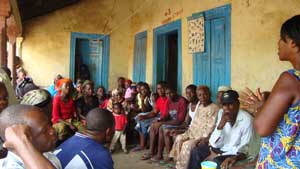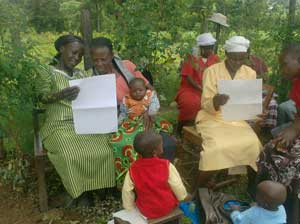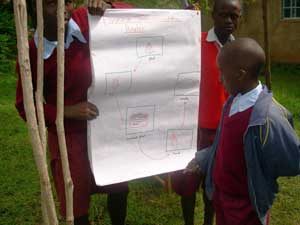Community Education in a Water Project

Community education is central to water and sanitation projects, and it has to happen before anyone can get their hands dirty and start digging holes.
Once both sides have agreed that they want to work together, they also agree on a time and date to start this education process. In order for people to get the most out of a new water point, they need to participate in learning sessions about hygiene and sanitation. In these workshops, group discussions, and/or house visits, local people are able to learn what are often new concepts.

People might learn about how to build a dish rack in their home to keep clean kitchenware off the floor, or the importance of washing your hands both before and after meals. Digging a latrine, and making four walls and a roof for it is also a key teaching in these education programs. Images like the own shown here help teach users how to keep the well safe and clean.
Community members are encouraged to share these ideas with their neighbors so together they learn about how their new water point is just the beginning of some big changes in their lives.
In addition to hygiene and sanitation, there are also discussions about contributions. The big question is, who is going to do what to make this project a reality?

We believe that it is vital to have community members contributing to a project as it helps realize the truth that they own it and will be the ones to look after it in the future. These contributions can come in many forms, including money or materials (like sand or gravel), labor and even preparing food for the drilling team. The important part is that whatever the contribution, local people are involved and making meaningful sacrifices for the sake of the project.
« Previous Step: Community Engagement | Next Step: Installing the Well »